Buchardt Audio S400 Loudspeakers

 My own personal Buchardt story is simple; I watched YouTube’s audio reviewing “stars” Zeos, Zero Fidelity and Thomas & Stereo rave about Buchardt Audio’s ported (and cheaper) S300 stand mounted speakers and then about the passively-radiated (and pricier) S400, and just had to hear what these Men of the YouTubes were on about. I requested a review. Chief “Madman” Mads Buchardt then shared with me via email his own slightly more interesting and heretofore unknown story.
My own personal Buchardt story is simple; I watched YouTube’s audio reviewing “stars” Zeos, Zero Fidelity and Thomas & Stereo rave about Buchardt Audio’s ported (and cheaper) S300 stand mounted speakers and then about the passively-radiated (and pricier) S400, and just had to hear what these Men of the YouTubes were on about. I requested a review. Chief “Madman” Mads Buchardt then shared with me via email his own slightly more interesting and heretofore unknown story.
He told me Buchardt Audio was started “unofficially” back in 2008 when he and his “dear childhood friend” Kasper started a company that sold speaker parts (drivers, crossover parts and development aid for use privately and by companies).
 It was called Rabu Acoustics and it was during these early years they started the designs that ended up being the S300 and S200 speakers. “Buchardt Audio proper was ‘officially’ started back in 2013 with these two models as our lineup,” says Mads. He continues, “Kasper being an engineer was the mastermind on the speaker design. My previous experience was actually as a salesman in a music instrument store. Being a musician myself, I also early on had a huge interest in HiFi and sound reproduction. Just before the launch of Buchardt Audio, Kasper sadly needed a job that payed a salary due to personal reasons. He left me with the finished designs and asked nothing in return. My job was from here to get them manufactured and sold. Kasper went to work for a well-revered speaker manufacturer for a few years where he did many of the speakers we now see in the their lineup. He later quit this Danish manufacturer and went back to do the S400 along with another very skilled engineer (Lasse) that quit alongside him. They were employed by Hansong (which is the company responsible for the manufacturing of our speakers now). Hansong provided Kasper and Lasse with state of the art equipment to develop speakers with. Here a new measurement robot that´s a leap in technology when it comes to speaker measurements was bought. S400 was the first HiFi speaker in the world to be engineered using this robot (likely still the only one now). It plays a big role in the precision of our soon to be patented waveguide technology.”
It was called Rabu Acoustics and it was during these early years they started the designs that ended up being the S300 and S200 speakers. “Buchardt Audio proper was ‘officially’ started back in 2013 with these two models as our lineup,” says Mads. He continues, “Kasper being an engineer was the mastermind on the speaker design. My previous experience was actually as a salesman in a music instrument store. Being a musician myself, I also early on had a huge interest in HiFi and sound reproduction. Just before the launch of Buchardt Audio, Kasper sadly needed a job that payed a salary due to personal reasons. He left me with the finished designs and asked nothing in return. My job was from here to get them manufactured and sold. Kasper went to work for a well-revered speaker manufacturer for a few years where he did many of the speakers we now see in the their lineup. He later quit this Danish manufacturer and went back to do the S400 along with another very skilled engineer (Lasse) that quit alongside him. They were employed by Hansong (which is the company responsible for the manufacturing of our speakers now). Hansong provided Kasper and Lasse with state of the art equipment to develop speakers with. Here a new measurement robot that´s a leap in technology when it comes to speaker measurements was bought. S400 was the first HiFi speaker in the world to be engineered using this robot (likely still the only one now). It plays a big role in the precision of our soon to be patented waveguide technology.”
So, to summarize, this high-end Danish loudspeaker company lost Kasper and Lasse, a proprietary speaker measuring robot now has a steady day job and the world has the technologically advanced Buchardt Audio speakers. And indeed they are! Technologically advanced, I mean.
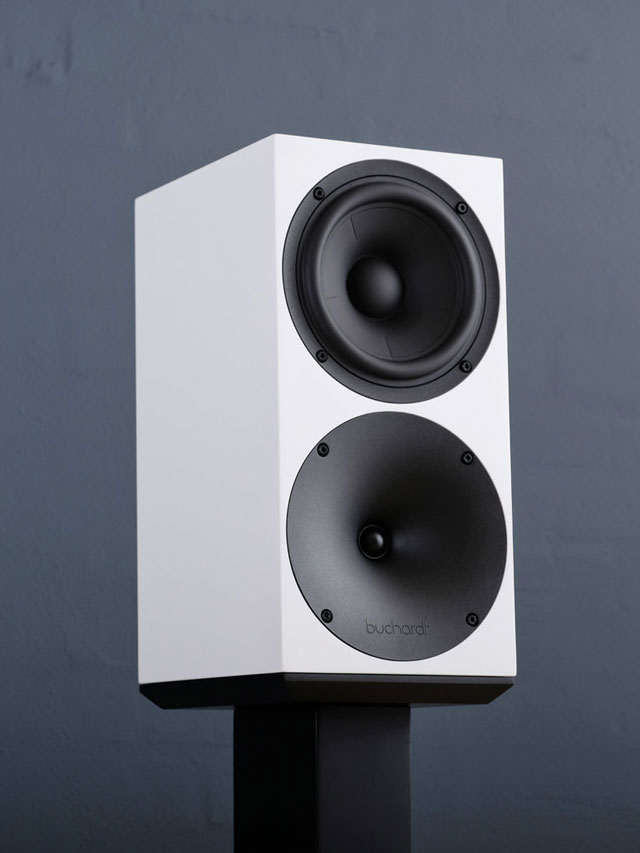
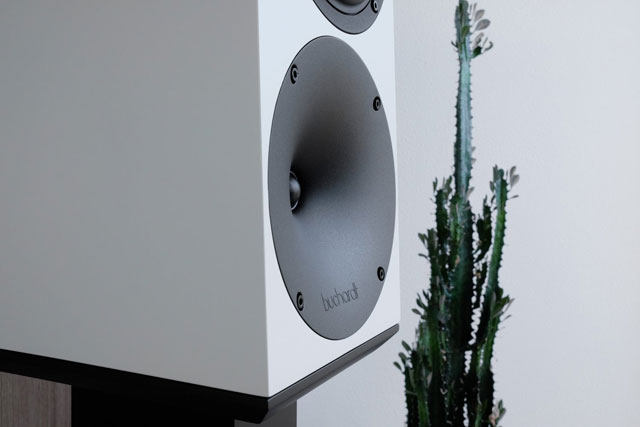
 The S400’s are a very sexy Scandinavian-design modern looking 88 dB efficient 4 Ohm two-way with a passive radiator on their backs which Mads says allows the S400 to be smaller than it otherwise would need to be to achieve the same bass output. He also feels the passive radiator approach pays dividends in terms of reduction of port noise artifact and ease of placement. The S400 tweeter, a (relatively) tiny fabric dome, sits deep in the center of Mads’ machined aluminum waveguide; a feature affording the S400 “controlled directivity,” i.e. the ability to spread the high frequency love around the room in a stable and balanced fashion and better serve off-axis listening. To wit, the website has what seems to be an impressive and colorful off and on-axis frequency response curve bearing this out:
The S400’s are a very sexy Scandinavian-design modern looking 88 dB efficient 4 Ohm two-way with a passive radiator on their backs which Mads says allows the S400 to be smaller than it otherwise would need to be to achieve the same bass output. He also feels the passive radiator approach pays dividends in terms of reduction of port noise artifact and ease of placement. The S400 tweeter, a (relatively) tiny fabric dome, sits deep in the center of Mads’ machined aluminum waveguide; a feature affording the S400 “controlled directivity,” i.e. the ability to spread the high frequency love around the room in a stable and balanced fashion and better serve off-axis listening. To wit, the website has what seems to be an impressive and colorful off and on-axis frequency response curve bearing this out:
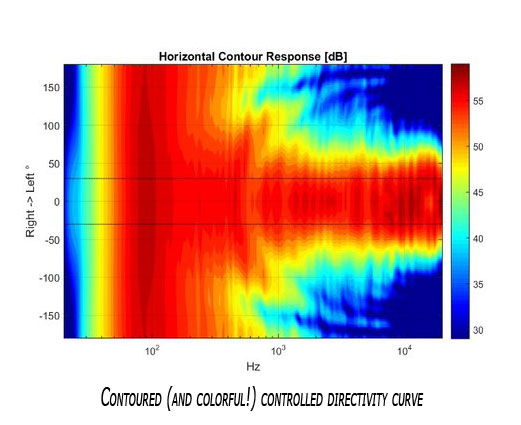
See? Smooooth. The mid/woofer is an aluminum-coned six incher which Buchardt’s website says is the brainchild of Ulrik Schmidt, the man responsible for the legendary Scanspeak Revelator. The website adds that the tweeter’s waveguide was expressly designed to suit this woofer’s characteristics.
Ok! So there’s a high tech robot and the website has colorful graphs and Mads can tell a beautiful story, but what do I say?!
Preparations for a bass party
 I say first that the S400s require considerable running in; like 100 hours considerable. Why? The all-knowing FAQ says the S400 uses very large rubber surrounds on both the main woofer and the passive radiator. The rubber is pretty stiff out of the box and needs “massage” to soften up and thereby be easier to drive.” (Emphasis mine). I buy it. Danish masseuses gotta work too. Visually, these are some seriously robust and heavily surrounded drivers. Despite this, the box itself was actually surprisingly light as compared with the denser and more compact Italian-oak constructed Xavian Perla Esclusiva’s. I hefted the S400’s with relative ease onto the dabs of blu-tak atop my matching white kitty-litter filled Kef Reference 24” high stands. To me, the S400 aesthetic was striking; Danish Modern minimalism at its best! Two large black circles set flush upon the deftly swept back face of a smartly cornered white box atop a single white pillar stand equals drop dead speaker sex appeal to me! WAF factor? Check, with a major plus! In my humble (but incredibly wise, high IQ and brilliantly informed) opinion, these are a MOMA worthy design that can actually improve the look of a room, rather than detract from it.
I say first that the S400s require considerable running in; like 100 hours considerable. Why? The all-knowing FAQ says the S400 uses very large rubber surrounds on both the main woofer and the passive radiator. The rubber is pretty stiff out of the box and needs “massage” to soften up and thereby be easier to drive.” (Emphasis mine). I buy it. Danish masseuses gotta work too. Visually, these are some seriously robust and heavily surrounded drivers. Despite this, the box itself was actually surprisingly light as compared with the denser and more compact Italian-oak constructed Xavian Perla Esclusiva’s. I hefted the S400’s with relative ease onto the dabs of blu-tak atop my matching white kitty-litter filled Kef Reference 24” high stands. To me, the S400 aesthetic was striking; Danish Modern minimalism at its best! Two large black circles set flush upon the deftly swept back face of a smartly cornered white box atop a single white pillar stand equals drop dead speaker sex appeal to me! WAF factor? Check, with a major plus! In my humble (but incredibly wise, high IQ and brilliantly informed) opinion, these are a MOMA worthy design that can actually improve the look of a room, rather than detract from it.

 Initially they were a bit “tubby” sounding, dull and lacking in micro dynamics. The stage was closed in. The speakers had been fed some music prior to arrival but apparently several days shy of enough. It definitely takes some time for the big rearward facing passive radiator to come “on song.” Maybe day two the tiny tweeter started to develop a lovely ‘sparkle” n” ping” with piano and I knew we were headed in the right direction. By the third day of play, the stage was expanding and mids were becoming more fulsome.
Initially they were a bit “tubby” sounding, dull and lacking in micro dynamics. The stage was closed in. The speakers had been fed some music prior to arrival but apparently several days shy of enough. It definitely takes some time for the big rearward facing passive radiator to come “on song.” Maybe day two the tiny tweeter started to develop a lovely ‘sparkle” n” ping” with piano and I knew we were headed in the right direction. By the third day of play, the stage was expanding and mids were becoming more fulsome.
I distinctly recall it was around day three or four while the Vienna piano quartet was playing Ries’s quartet in B minor, that I began to want to sit on the couch for extended periods take in everything in the S400 was doing; the speed, the size and the sparkle.
During the review, I positioned the S400s with their backs anywhere from 15” to 30” out from the front wall and found they gave their most balanced performance in my room less than two feet from the front wall. They were certainly not as particular though as my Tektons as to where exactly they were sited. However, like my Tektons, the S400s ended up about 7.5 feet apart center to center and toed in maybe 15 degrees. My (gold and rhodium plated) ears do their listening about 9.5 feet from the front plane of the speakers.
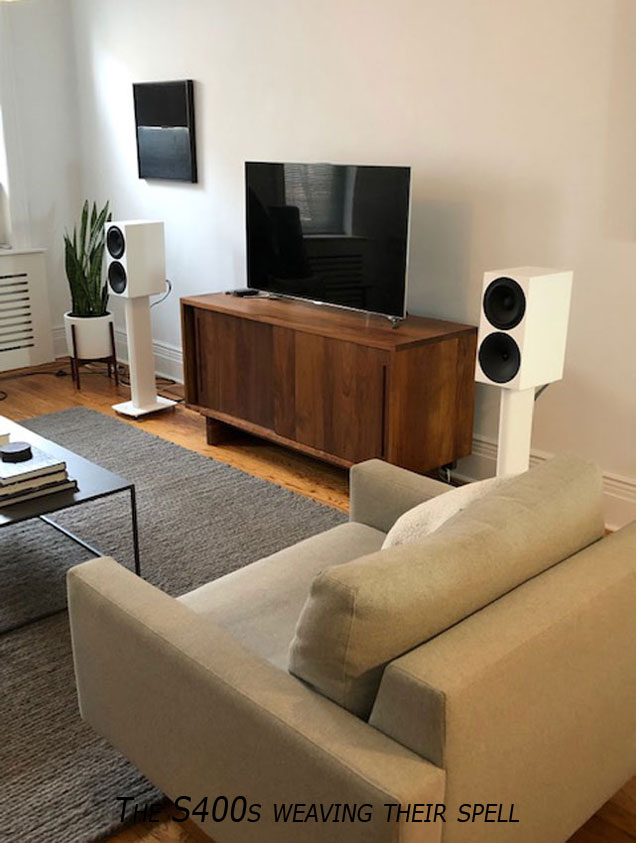
Great Listenings for the make benefit of the peoples!!!!
As powered by my trusty 150 watt per side Wells Audio Majestic integrated amp fed by my Aqua La Voce S3 DAC and SOTM SM-200 streamer/Schiit Eitr USB converter combo, I heard immediately there was brawn behind those museum-quality good looks. The S400 plays Big “n Large. In fact, it plays as big “n large as many a floorstander. This is a big solid (oh please forgive me!) Wall of Sound. There; that felt good and it’s aptly descriptive!
Matter of fact, the S400 more so than many a speaker I’ve come across and more so than any other compact, puts me in mind of my old Magnepan MMG’s. There is that kind of monolithic width and height. Israeli bassist Avishai Cohen’s jazz collaboration with Tel Aviv pianist Mitai Hershkovits featured a “yuuuge” and present upright bass and piano replete with serious image height. Don”t get me started on symphonic music. Okay, do! You want a speaker that gives you a reasonable facsimile of the Berlin Phil in your 15 by 20 foot apartment/listening room? To the extent it’s possible, the S400 can and will do. Crushing things like the “Rach 3” (Rachmaninov’s third piano concerto) featuring the always poetic yet heroic Leif Ove Andsnes were by turns poetic and particularly crushing in terms of weight and scale.
While it was busy producing that sonic Wonderwall (#trademarked?), the S400 did so with a beautifully even-handed tonal balance. It’s not a particularly “warm” or “bright” speaker per se, but rather one that seems generally to have its tonal “ducks” in a veritable row. It also keeps its ducks in an even perspective. Whereas the Xavian Perla Esclusiva I recently reviewed (and now have on hand as my long-term monitor reference) and to some extent my Tekton Lore Refs, both have a somewhat mid-forward and/or generally forward overall presentation (which I enjoy, by the way!), the S400’s mids are more set in “line” with its highs and lows; more in the same mid-hall plane rather than in the middle of your lap. Via the Xavians, Katie Melua comes over to sing happy birthday to you on your couch whereas with the S400’s, she just does her songstress thing over there by the speakers in line with the other musicians.
 Norah Jones. There, I said that too. But her new album “Begin Again” (especially the MQA version) is actually quite listenable (I’m sure she’d love that descriptor). It was another of the close-mic’d singer/songwriter albums that told me the Buchardt plays the middle ground with vocals with respect to both tonality and perspective. Norah (the voice, not the person) is not as warm and forward via the S400’s as she is via the Xavians, and the Tektons too have a more forward perspective. The Buchardt then may be more strictly accurate/balanced here in not shoving a vocalist at you, and of course this may come across as less “she is here” and more “you are there.” This may be something you consider depending on your preference.
Norah Jones. There, I said that too. But her new album “Begin Again” (especially the MQA version) is actually quite listenable (I’m sure she’d love that descriptor). It was another of the close-mic’d singer/songwriter albums that told me the Buchardt plays the middle ground with vocals with respect to both tonality and perspective. Norah (the voice, not the person) is not as warm and forward via the S400’s as she is via the Xavians, and the Tektons too have a more forward perspective. The Buchardt then may be more strictly accurate/balanced here in not shoving a vocalist at you, and of course this may come across as less “she is here” and more “you are there.” This may be something you consider depending on your preference.
While the S400 lacked the utter tonal luxuriousness and sheer density of the Xavian, it countered with a cleaner, more seemingly strictly “neutral” take on the frequency spectrum. Nothing stood out in an obvious way. The high-end was present and accounted for; mids present and accounted for and then there was… the bass. Holy Mighty Mouse! The BASS! Mind you, the S400 bass does not stand out per se, but you will definitely not have difficulty noticing it when it makes an appearance. It is stunningly powerful and stunningly deep. It is also stunningly clean and taught. There is no overhang; it is not bloated or pumped up an any way to my ear. It is simply there. In fact, except for maybe that one super low pipe organ note somewhere on an obscure Telarc reference recording, it’s ALL there.
Like a noob headphone reviewer, I could give ad nauseam annotated and numbered (mostly K-pop and Brittany Spears) musical examples but straight up I’ve never heard a deeper more solid portrayal of a stand-up bass in any of my apartments over the years than from the S400. Okay, I can’t resist a couple more examples! On the Bill Evans Trio’s “Explorations” album with tracks like “Nardis” and “How Deep is the Ocean?” you find out it is pretty. friggin. deep. You get it alllll. The very lowest deepest notes of that fat stand-up bass are in full taught and resonant effect. It’s really much like when I used to have my Rel T-something-or-other hooked up. It’s that floor-vibratingly deep and solid.
 Track one of Bill Evans’ Portrait in Jazz showed me yet more of the lowest cleanest string bass I’ve ever had in any of my apartments and here, even with the “baby Wells” 40 watt Heed Obelisk Si 3 hooked up. Yep, I’d have to say the last time I heard this kind of deep solidity was with the Atsah Hypex monos I reviewed a while back. They could do this with my Tektons and that makes me truly shudder to think what depths they might plumb with this track on the Buchardts.
Track one of Bill Evans’ Portrait in Jazz showed me yet more of the lowest cleanest string bass I’ve ever had in any of my apartments and here, even with the “baby Wells” 40 watt Heed Obelisk Si 3 hooked up. Yep, I’d have to say the last time I heard this kind of deep solidity was with the Atsah Hypex monos I reviewed a while back. They could do this with my Tektons and that makes me truly shudder to think what depths they might plumb with this track on the Buchardts.
Continuing directly from my listening notes, “instrumental sounds are carried on air mattresses. Everything that has air moving around it- you hear it. Pianos? Surrounded by big cushions of performance hall air. Everything that has an open airy broad, expansive feel. Like an Olympic snowboarder, the s400’s can catch big air and the images populating that vacuum are huge when need be; open and easy.”
Can you tell I found the speakers spacious and airy? Can you tell I actually write decently coherent listening notes? Anyhow, this quality of the Buchardts may make for less in the way of image specificity than some, but as mentioned, the gestalt here overall is Big Sky, Montana; not Philadelphia row house. Ye Old Audiophile Classic “Waltz for Debby” sounded as wide and open as I’ve heard it. Of course, Lafaro’s bass was stunningly deep and soulful and I’d have to say the Wells/Buchardt combo takes home yet another Audio Appreciation Award for producing the biggest most jazz-club-like space and sound I’ve ever had in any apartment system I’ve ever assembled. Really, just a massive stage; tall and wide and populated by big realistically sized images and an annoying jazz club patron or two. Genuinely impressively live sounding.
I think it’s Darko that likes to say something like “since we don”t know exactly how the original session sounded, accuracy is a feeling.” In this vein, tonally the S400’s feel more strictly “neutral” than the warmth of the Xavian or the (relative) brightness of the Tektons. In terms of warmth, I’d rank it going from “brightest” to “warmest” Tektons, S400s, Xavians.
The Buchardt sound is less dense and solid though than either. I hear it as whispier; whipped creamier, airier and lighter but never clinical. Certainly my ears never bled. With Maurizio Pollini’s Mozart concertos on DG for example, the S400 told me the recording was too bright, but they leaned over and whispered it to me; they didn’t shout it out loud.
One interesting characteristic I noted was the tendency of the Buchardt tweeter, while perfectly well behaved and never calling attention to itself, to let go of reverb before my other speakers. This means on a solo piano piece like Bill Evans “Peace Piece,” the lingering bell-like high tones linger for a shorter time than with the other two speakers. In other words, the decay of the reverb is somewhat foreshortened. I think Thomas actually mentioned this in his YouTube review as well. Could this be a tweeter size thing? Something to do with the horn loading? Dunno but there it is.
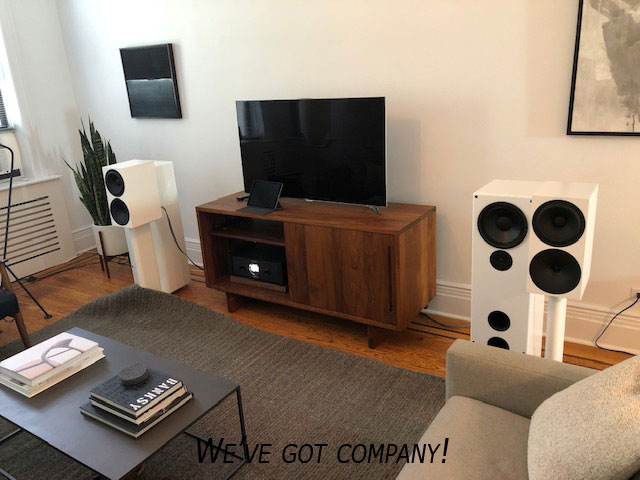
Before we leave the sonic assessment part of the show, one important consideration I want to call to your attention is listening volume. I don’t feel this very important aspect of our systems gets nearly enough cyber ink spilled across it and it’s such an important consideration! If you’re in a nice house like Klipsch’s ace reviewer Youthman on YouTube with a dedicated listening room I guarantee you regularly listen at WAY different volumes than someone in a WAY overpriced New York City apartment does. I should know; I live in the latter. Indeed Youthman often raves about how much sheer volume and kick his beloved Klipsch’s can generate/handle and rightly so! He seemingly listens to a lot of rock at stadium volumes in a dedicated room. I never talk about these things because in my current room with my own musical preferences, I have neither the capability nor the desire to explore such limits. During my review, I switched frequently between the Tekton Lore Ref, the Xavian Perla Esclusiva and the S400’s and there is a definite pecking order in terms of which speaker prefers what.
The 96 dB efficient 8 Ohm Tektons love to be played quietly. Low power amp, high power amp; doesn’t matter. Their micro dynamics are quite engaging even at lowish late night (maybe 67 dB peak?) levels. Next up are the Xavians. They enjoy a quiet late night romp as well, but they need power like the 150-a-side of my Wells to do it with any flair. Now the Buchardts are decent enough low level speakers meaning they can do it alright, but they don’t love it. They certainly weren’t great at it with the 40 watts my Heed Obelisk SI3 offers them, but did better with the Wells. Nonetheless, either due to neighbors, a sleeping spouse or a slumbering kitten, if you’re going to be doing a lot of lowish level listening (maybe less than 75 dB peak levels?), the S400 is going to stare at you, cover its mouth and yawn. The Tektons and Xavians therefore are more capable of moving, emotional performances at these low levels.
Ya pays your money and ya makes your choices…
Without question the S400 is the “biggest” sounding monitor-sized transducer I’ve encountered in my audio life. In fact, they may even sound bigger with deeper and better defined bass than my physically much larger Tektons. The Buchardts major in ASB; Air, Space and Bass and offer a “clean” and neutral feeling tonality; one in which no portion of the frequency spectrum feels unduly highlighted. They are easy to place, (relatively) easy to drive, and have an unusually stable and natural way with imaging. The Xavians, a warmer speaker, counter with a denser tonality, a slightly wider image (though not as big in scale), coupled with better low level dynamics. The Tektons also have a bit more sonic “density” than the S400s, have better lower level dynamics and punch than either and are a more forward and “raw” listen than either. I would also say the S400’s are a shade less tonally colorful than either; a shade less saturated than the Xavians or Tektons. All the colors are there, they are simply not quite as vivid as with the Tekton or the even more technicolor Xavian.
In my opinion, the S400’s ideal listener would be someone who listens at moderate or higher volume levels to rock, larger scale jazz and orchestral recordings or electronica (they are stunning with synth bass lines!). If however, your preference is late night chamber music or solo piano at lowish apartment-approved levels or girl/guy with a guitar, you might consider the Xavians or from what I’ve read, one of Buchardt’s non-passively-radiated models. The Tektons really can do it all, but they are neither quite as solid down low as the S400 nor are they as come-hither inviting tonally as the Xavian.
Mads says, “We don’t make a ton of products, but the ones we do are perfected over years of development by some of the most talented engineers in the industry. Luckily Denmark is the place to be when you need talented engineering in the Hi-Fi business.” It’s also apparently the place to be for happiness levels. Denmark boasts some of the highest in the world. Maybe that’s because of the speakers.
The S400s play huge, go deep and would look perfectly at home in the MOMA gift shop. Give them a bit of power (preferably more than 40 or 50 watts!) and they will reward you with a tonally natural, balanced, spacious and dynamic listen. This will of course, increase your own happiness levels wherever you are. The S400s have been a real pleasure to have in my home and are certainly worthy recipients of all of the internet praise they have received. I look forward to crossing paths with more from the Madman Mads and his hardworking speaker-building robots in the near future. Go Mads Go!!
I bid you peace.


David Abramson
Technical Specifications:
Retail price: 1833.70 USD
Operating principle:2-way Passive radiator system
Tweeter:1 x 0.74″ Custom fine weave soft fabric textile with CDC aluminum waveguide
Mid / woofer:1 x 6″ Aluminum cone with break-up optimization
Passive Radiator:1 x 5×8″ Long throw passive radiator with very low mass added
Impedance:4 ohms
Sensitivity:88 dB
Frequency response:33 – 40.000 Hz +/- 3dB (in-room)
Crossover Point:2000hz
Power recommendation:40 – 200 W
Measurements (h x w x d):365 x 180 x 240 mm
Weight:18 kg / set
Speaker grilles included
Available from Buchardtaudio.com (with 30 day no risk home trial)
Address:
Buchardt Audio
Industrivej 12
8653 Them
Denmark
Email: info@buchardtaudio.com
Website: https://www.buchardtaudio.com
2 thoughts on "Buchardt Audio S400 Loudspeakers"
Leave a Reply
Stereo Times Masthead
Publisher/Founder
Clement Perry
Editor
Dave Thomas
Senior Editors
Frank Alles, Mike Girardi, Russell Lichter, Terry London, Moreno Mitchell, Paul Szabady, Bill Wells, Mike Wright, and Stephen Yan,
Current Contributors
David Abramson, Tim Barrall, Dave Allison, Ron Cook, Lewis Dardick, John Hoffman, Dan Secula, Don Shaulis, Greg Simmons, Eric Teh, Greg Voth, Richard Willie, Ed Van Winkle, Rob Dockery, Richard Doran, and Daveed Turek
Site Management Clement Perry
Ad Designer: Martin Perry




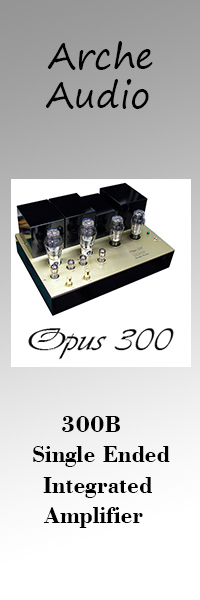

Thanks for a great review.
Bought a used pair of your S400 MK2’s with the Burchardt stands. Inside the packing box were two black metal brackets with mounting holes in them and also a couple of screws. Are there instructions on how to attach the brackets to the stands and the speakers to the brackets? Help!